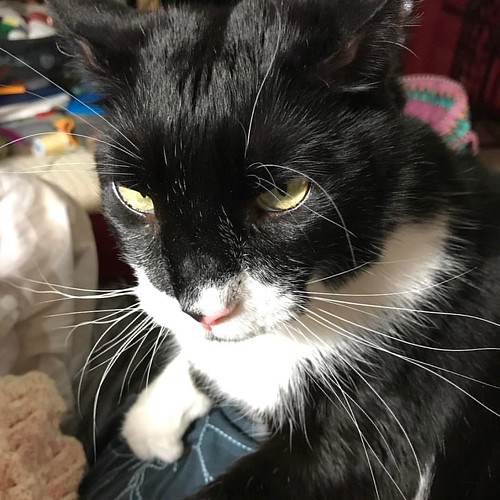n. Although cHS4 insulator sequences flanking the transgene cassette were found to protect against early position effects, resulting in increased initial transgene expression, our data also demonstrate that cHS4 elements do not offer longterm protection against repression in ARPE-19 cells, and shutdown of expression was seen even in clones with multiple transposon insertions. Interestingly, our findings demonstrate that incorporation of cHS4 sequences is beneficial for mobilizing SB transposons from plasmid DNA supporting an improved stable transfection rate. Results Efficient SB, PB and Tol2 transposition in ARPE-19 cells To study mobilization and transgene expression levels of DNA transposon-derived vectors in ARPE-19 cells, we generated vectors in the context of SB, PB, and Tol2, containing an RSV-driven bicistronic gene cassette consisting of the eGFP reporter gene, an internal ribosomal entry site, and the puromycin resistance gene . The vectors were designated pSBT/RGIP, pPBT/RGIP, and pTol2T/RGIP, respectively. Transposition efficiencies of the three vectors in ARPE-19 cells were  measured by standard colony formation assays. Equal molar amounts of pSBT/RGIP, pPBT/RGIP, and pTol2T/RGIP were cHS4 Insulation of Transposon-Delivered Transgenes transfected together with pcDNA3.1D/V5.TOPO plasmid or a helper plasmid expressing either SB100X transposase, the native iPB transposase, or Tol2 transposase. This set of transposase variants were not chosen with the intention of directly 5(6)-ROX chemical information comparing transposition capabilities but with the expectation of generating series of stable cell clones with a comparable number of insertions. After 8 days of selection, puromycin-resistant colonies were 18729649 stained and counted. As shown in empty vector was observed for each transposon system, indicating that all three vectors were efficiently transposed in ARPE-19 cells. Next, we constructed three series of ARPE-19 clones containing genomic insertions of the SBT/RGIP, PBT/RGIP, or Tol2T/ RGIP transposons, respectively. Equal molar amounts of pSBT/ RGIP, pPBT/RGIP or pTol2T/RGIP were transfected together with SB100X, iPB, or Tol2 transposase-expressing plasmid, respectively, into ARPE-19 cells, and single colonies were subsequently isolated after puromycin selection. Three groups of 29 SB clones, 27 PB clones and 31 Tol2 clones were isolated in total. Southern blot analysis of genomic DNA from all expanded cell clones revealed a large variation in the number of transposon insertions per clone within each group. In all three groups, a variation in transposon copy number ranging from 1 copy per clone to more than 10 copies per clone was observed. However, the 3 cHS4 Insulation of Transposon-Delivered Transgenes average copy number was comparable for all three groups, with 6.3 copies per clone for SB clones, 5.9 copies per clone for PB clones and 6.1 copies per clone for Tol2 clones. Hence, the small difference in transposition activity obtained with the three transposase variants did not translate into a substantial difference in the transposon copy number. 15001546 Increased transgene expression levels from insulated SB and PB transposon vectors, but limited long-term protection against silencing by cHS4 insulators in ARPE19 cells Postintegrative silencing of RGIP-containing ARPE-19 clones the PB vector seems less vulnerable to transcriptional repression compared to SB and Tol2 cHS4 Insulation of Transposon-Delivered Transgenes uninsulated clones, the result suggests that
measured by standard colony formation assays. Equal molar amounts of pSBT/RGIP, pPBT/RGIP, and pTol2T/RGIP were cHS4 Insulation of Transposon-Delivered Transgenes transfected together with pcDNA3.1D/V5.TOPO plasmid or a helper plasmid expressing either SB100X transposase, the native iPB transposase, or Tol2 transposase. This set of transposase variants were not chosen with the intention of directly 5(6)-ROX chemical information comparing transposition capabilities but with the expectation of generating series of stable cell clones with a comparable number of insertions. After 8 days of selection, puromycin-resistant colonies were 18729649 stained and counted. As shown in empty vector was observed for each transposon system, indicating that all three vectors were efficiently transposed in ARPE-19 cells. Next, we constructed three series of ARPE-19 clones containing genomic insertions of the SBT/RGIP, PBT/RGIP, or Tol2T/ RGIP transposons, respectively. Equal molar amounts of pSBT/ RGIP, pPBT/RGIP or pTol2T/RGIP were transfected together with SB100X, iPB, or Tol2 transposase-expressing plasmid, respectively, into ARPE-19 cells, and single colonies were subsequently isolated after puromycin selection. Three groups of 29 SB clones, 27 PB clones and 31 Tol2 clones were isolated in total. Southern blot analysis of genomic DNA from all expanded cell clones revealed a large variation in the number of transposon insertions per clone within each group. In all three groups, a variation in transposon copy number ranging from 1 copy per clone to more than 10 copies per clone was observed. However, the 3 cHS4 Insulation of Transposon-Delivered Transgenes average copy number was comparable for all three groups, with 6.3 copies per clone for SB clones, 5.9 copies per clone for PB clones and 6.1 copies per clone for Tol2 clones. Hence, the small difference in transposition activity obtained with the three transposase variants did not translate into a substantial difference in the transposon copy number. 15001546 Increased transgene expression levels from insulated SB and PB transposon vectors, but limited long-term protection against silencing by cHS4 insulators in ARPE19 cells Postintegrative silencing of RGIP-containing ARPE-19 clones the PB vector seems less vulnerable to transcriptional repression compared to SB and Tol2 cHS4 Insulation of Transposon-Delivered Transgenes uninsulated clones, the result suggests that
Calcimimetic agent
Just another WordPress site
